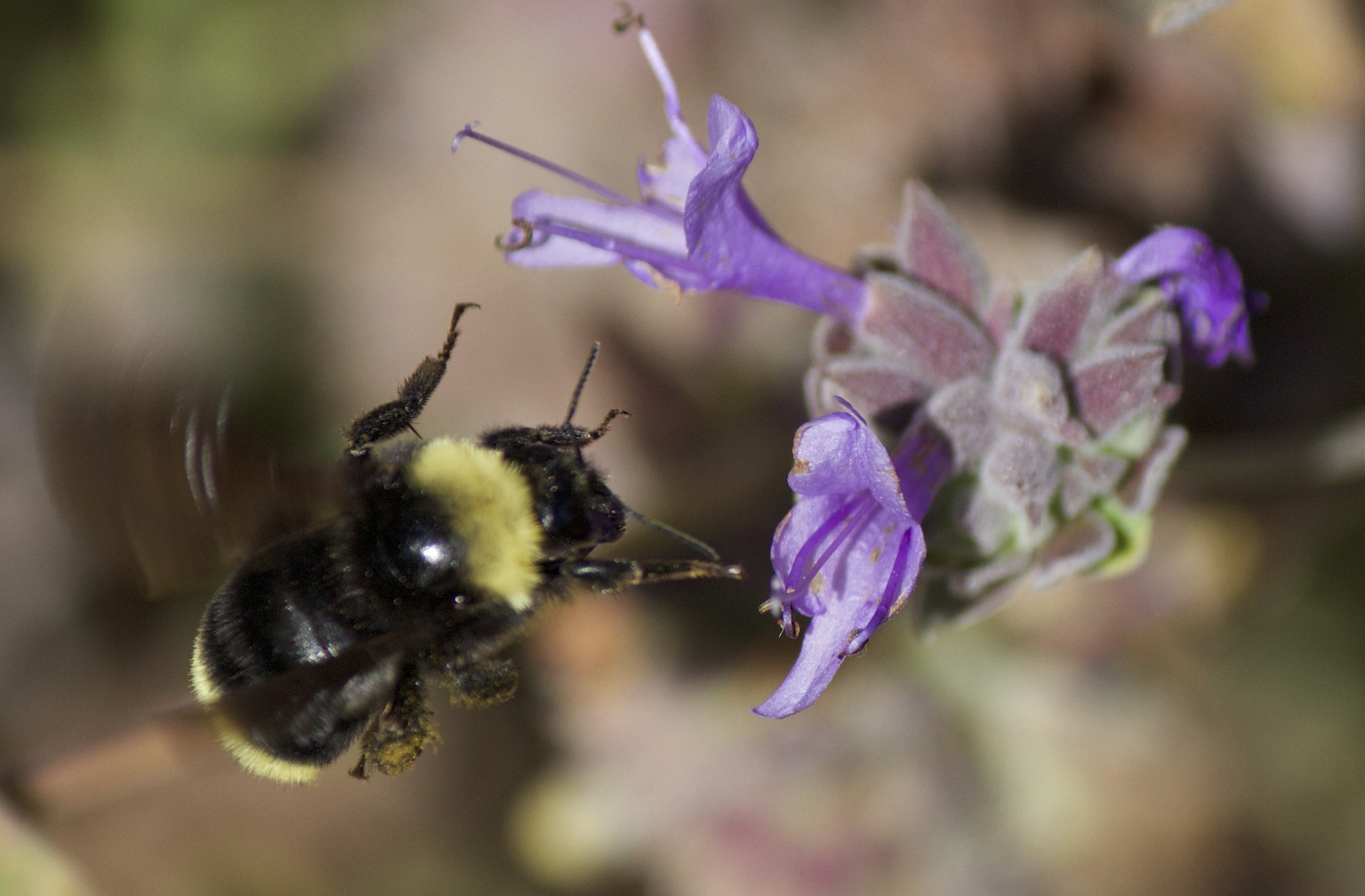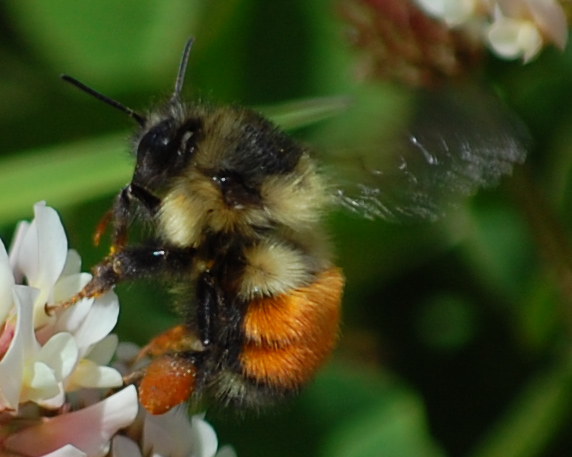Native Bumble Bees: Important Pollinators in the Willamette Valley

Bees do have a smell, you know, and if they don’t they should, for their feet are dusted with spices from a million flowers.Ray Bradbury, Dandelion Wine
Pollinators in Decline
As many people are aware, there has been a mysterious disappearance of Apis mellifera, or the European honey bee, that has been observed over the last several years. Whether the cause of Colony Collapse Disorder (CCD) is the result of pesticide poisoning, Varroa mites, a lack of pollen and nectar sources, or a combination of the above is still unclear. Many Corvallis locals have responded by learning how to keep honey bees in their backyard as a hobby. A different approach, and an arguably better one, could be to plant gardens specifically focused on supporting the many pollinators that are native to the Willamette Valley. There are many types of pollinators, including other kinds of bees, birds, and butterflies.
Bumble bees (Bombus spp.) are some of the primary pollinator insects in the Pacific Northwest, and they are especially important for native plant pollination. There are 16 species of native bumblebees in the PNW, and most of these populations are thriving.
The Bumble Bee Lifestyle
Bumble bees are eusocial insects, living in colonies of usually less than 100 individuals led by a single queen. All summer, worker bees, who live for about a month, are hard at work collecting nectar and pollen to feed new generations of bees that will replace them. In the fall the entire colony dies, except for one new queen that is born. She is the only member of the colony that hibernates in the ground over winter. In spring, the new queen searches for a suitable place to start the new colony, and once she finds it, begins laying eggs for a new colony to begin. This cycle is repeated year after year.
Plants Pollinated by Bumble Bees
Each species of bumble bee pollinates a different set of plants, depending on the morphology of the bee. Some bees have longer tongues than others, allowing them to pollinate longer tubed flowers. Most home garden and agricultural crops can be pollinated by bumble bees. Tomatoes and other vegetables, fruit trees and vines, and flowers are all pollinated by bumble bees. Lupine, mint, larkspur, aster, clover, salmonberry, Oregon grape, salal, huckleberry, madrone and rhododendron are all important native plants for bumble bees in the Pacific Northwest.
Bumble Bees of the Willamette Valley
Listed below are 6 of the most common bumblebees found in the Willamette Valley, and some specifics about preferred food sources:

White-shouldered Bumble Bee (B. appositus)
Common in the western United States, this bee has a long tongue and prefers to visit these plants: plume thistles (Cirsium), larskpurs (Delphinium), toadflax (Linaria), clovers (Trifolium), cranesbills (Geranium), and beardtongues (Penstemon).
Fun Fact: A mostly-yellow form of this bee is rumored to live around Corvallis, Oregon.

California Bumble Bee (B. californicus)
An uncommon bumble bee in the western United States, possibly in decline. This bee has a long tongue and prefers pollen and nectar of these plants: plume thistles (Cirsium), clovers (Trifolium), wildmints (Monardella), milkvetch (Astragalus), beardtongues (Penstemon), and sand-verbenas (Abronia).
Fun Fact: Some authorities say it is a subspecies of golden northern bumble bee (B. fervidus).

Black-tailed Bumble Bee (B. melanopygus)
This bee, common in the western U.S., has a medium-length tongue and frequents these plants: lupines (Lupinus), clovers (Trifolium), fireweeds (Chamerion), Rubus species such as blackberries and raspberries, ragworts (Senecio), and beardtongues (Penstemon).
Fun Fact: One of the earliest bumble bees to start nesting and produce males.

Fuzzy-horned Bumble Bee (B. mixtus)
Common to the western United States, this bee has a medium-length tongue and prefers pollen and nectar from: lupines (Lupinus), clovers (Trifolium), snowberry (Symphoricarpos), Rubus species such as blackberries and raspberries, ragworts (Senecio), and willowherbs (Epilobium).
Fun Fact: The common name is only applicable to males.

Nevada Bumble Bee (B. nevadensis)
Another common bumble bee in the western United States, Nevada bumble bee has a long tongue and collects pollen and nectar from milkvetch (Astragalus), balsamroots (Balsamorhiza), Ceanothus species such as buckbrush and blue blossom, plume thistles (Cirsium), sunflowers (Helianthus), sweet clovers (Melilotus), currants and gooseberries (Ribes), and vetches (Vicia).
Fun Fact: Lives in open grassy prairies and meadows.

Yellow-faced Bumble Bee (B. vosnesenskii)
This very common bumble bee of the western United States is possibly increasing in abundance. With a medium length tongue, this bee frequents lupines (Lupinus), plume thistles (Cirsium), buckwheats (Eriogonum), phacelias (Phacelia), clarkias (Clarkia), and rabbitbrush (Ericameria).
Fun Fact: Important pollinator of greenhouse tomatoes.

